Modeling the role of working memory and episodic memory in behavioral tasks
- PMID: 17979198
- PMCID: PMC2376903
- DOI: 10.1002/hipo.20382
Modeling the role of working memory and episodic memory in behavioral tasks
Abstract
The mechanisms of goal-directed behavior have been studied using reinforcement learning theory, but these theoretical techniques have not often been used to address the role of memory systems in performing behavioral tasks. This work addresses this shortcoming by providing a way in which working memory (WM) and episodic memory may be included in the reinforcement learning framework, then simulating the successful acquisition and performance of six behavioral tasks, drawn from or inspired by the rat experimental literature, that require WM or episodic memory for correct performance. With no delay imposed during the tasks, simulations with WM can solve all of the tasks at above the chance level. When a delay is imposed, simulations with both episodic memory and WM can solve all of the tasks except a disambiguation of odor sequences task.
(c) 2007 Wiley-Liss, Inc.
Figures
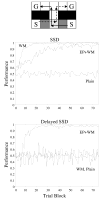
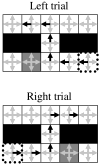
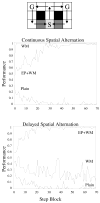

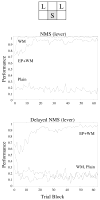
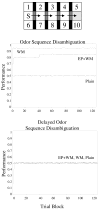
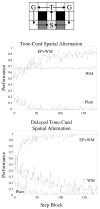
Similar articles
-
Memory Transformation Enhances Reinforcement Learning in Dynamic Environments.J Neurosci. 2016 Nov 30;36(48):12228-12242. doi: 10.1523/JNEUROSCI.0763-16.2016. J Neurosci. 2016. PMID: 27903731 Free PMC article.
-
The influence of Markov decision process structure on the possible strategic use of working memory and episodic memory.PLoS One. 2008 Jul 23;3(7):e2756. doi: 10.1371/journal.pone.0002756. PLoS One. 2008. PMID: 18648498 Free PMC article.
-
Working and reference memory across the estrous cycle of rat: a long-term study in gonadally intact females.Behav Brain Res. 2010 Nov 12;213(1):10-8. doi: 10.1016/j.bbr.2010.04.018. Epub 2010 Apr 21. Behav Brain Res. 2010. PMID: 20416343
-
An overview of the tasks used to test working memory in rodents.Neurosci Biobehav Rev. 2004 Nov;28(7):699-709. doi: 10.1016/j.neubiorev.2004.09.002. Neurosci Biobehav Rev. 2004. PMID: 15555679 Review.
-
New perspectives on binding in visual working memory.Br J Psychol. 2019 May;110(2):207-244. doi: 10.1111/bjop.12345. Epub 2018 Oct 8. Br J Psychol. 2019. PMID: 30295318 Review.
Cited by
-
A phase code for memory could arise from circuit mechanisms in entorhinal cortex.Neural Netw. 2009 Oct;22(8):1129-38. doi: 10.1016/j.neunet.2009.07.012. Epub 2009 Jul 18. Neural Netw. 2009. PMID: 19656654 Free PMC article. Review.
-
Structural differences in hippocampal and prefrontal gray matter volume support flexible context-dependent navigation ability.J Neurosci. 2014 Feb 5;34(6):2314-20. doi: 10.1523/JNEUROSCI.2202-13.2014. J Neurosci. 2014. PMID: 24501370 Free PMC article. Clinical Trial.
-
Analyses of Markov decision process structure regarding the possible strategic use of interacting memory systems.Front Comput Neurosci. 2008 Dec 24;2:6. doi: 10.3389/neuro.10.006.2008. eCollection 2008. Front Comput Neurosci. 2008. PMID: 19129935 Free PMC article.
-
Learning latent structure: carving nature at its joints.Curr Opin Neurobiol. 2010 Apr;20(2):251-6. doi: 10.1016/j.conb.2010.02.008. Epub 2010 Mar 11. Curr Opin Neurobiol. 2010. PMID: 20227271 Free PMC article. Review.
-
Computational modeling and analysis of hippocampal-prefrontal information coding during a spatial decision-making task.Front Behav Neurosci. 2014 Mar 3;8:62. doi: 10.3389/fnbeh.2014.00062. eCollection 2014. Front Behav Neurosci. 2014. PMID: 24624066 Free PMC article.
References
-
- Ainge JA, van der Meer MA, Langston RF, Wood ER. Exploring the role of context-dependent hippocampal activity in spatial alternation behavior. Hippocampus. 2007 Jun 6; Epub. - PubMed
-
- Arleo A, Gerstner W. Spatial cognition and neuro-mimetic navigation: a model of hippocampal place cell activity. Biol Cybern. 2000;83:287–99. - PubMed
-
- Baddeley AD, Hitch G. Working memory. In: Bower GH, editor. The psychology of learning and motivation: Advances in research and theory. Vol. 8. New York: Academic Press; 1974. pp. 47–89.
-
- Baddeley AD. Working memory. Oxford: Clarendon Press; 1986.
Publication types
MeSH terms
Grants and funding
LinkOut - more resources
Full Text Sources

